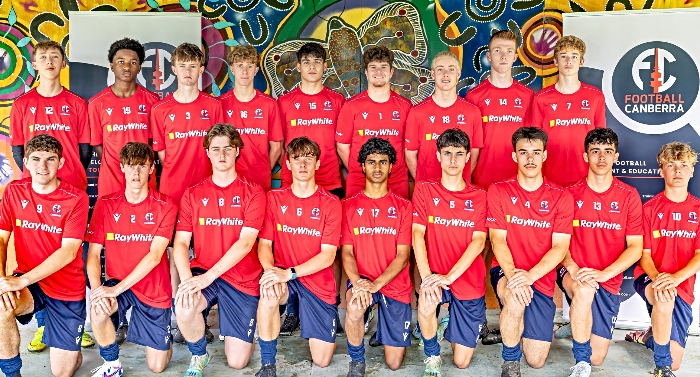AFL’s fixture of favours and compromises does the sport few favours | Jonathan Horn

- by Admin
- June 23, 2024

It started on a bus in Detroit. Several AFL executives on an NFL Super Bowl junket were sitting next to Canadian software guru Rick Stone. For years, the AFL fixture had been done by hand, and then on a spreadsheet. With two new franchises coming, and with billions of broadcast dollars at stake, they needed a more sophisticated model.
“I was doing manufacturing scheduling at the time and it’s not a big leap from that to sports leagues scheduling and optimisation,” Stone told AFL.com.au last year. “The software is very similar for all the leagues. But the rules and the priorities are very different for every league.”
The AFL is upfront about its priorities. “The two KPIs of the fixture are broadcast viewership and attendance,” fixture boss Grant Bowler said. It’s a mix of algorithms, favours and compromises. It’s one of the AFL’s primary levers to appease, to reward, to penetrate challenging markets and to offer a leg up.
But ultimately, it’s about satisfying the host broadcasters. Former AFL chief executive Andrew Demetriou, who’s being touted as the next chair of the AFL Commission, was on radio last week talking about the prospect of a universal mid-season bye. He recalled [not always his strong suit] many a meeting where Channel Seven and Foxtel executives shouted down the mere suggestion of it.
Demetriou’s successor Gillon McLachlan negotiated a $4.5bn broadcast rights deal that handed an extraordinary amount of power to the host broadcasters. They want double-up, blockbuster games between big-drawing traditional rivals. They want to play every Thursday night. Hell, they’d make them play every night if they could get away with it. A semblance of evenness, fairness and clarity are pushed well down the list of priorities.
It has taken nearly four months, but now that all teams have had at least one bye, you’d think we’d finally have a sense of the ladder and where each teams stands.
But there’s so many inequities and quirks that skew and confuse things. Carlton’s win on Friday was a complete performance, a total domination, and surely the clearest sign yet that they’re ready to contend for a premiership. But their draw is completely nonsensical.
By the second week of August, Carlton will have played Collingwood, North Melbourne, Richmond, Port Adelaide, GWS and Geelong twice. But they won’t yet have played Hawthorn, West Coast or St Kilda. Similarly, the Giants just played their second Sydney derby in seven weeks, but don’t play Fremantle for the first time until round 23.
Their main contenders all have their own inherent advantages and disadvantages. Essendon, who play North Melbourne and West Coast twice, play their next eight games in Melbourne. Collingwood plays seven of its remaining nine home and away games at the MCG. Meanwhile, if Sydney finish first and win two home finals, they won’t have played or trained at the MCG since April.
It’s swings and roundabouts of course. The Swans had two byes before many other clubs even had one. Heading into round 15, the ladder leaders had enjoyed 33 more days rest between games than West Coast and Geelong.
It means we should be cautious of jumping to conclusions on teams and on coaches. Just over a month ago, several prominent commentators had Luke Beveridge’s head on the chopping block, a focus which has since shifted to the two South Australian coaches. Brisbane had an especially difficult draw in the first few months, but play six of their last nine in Queensland, and completely outplayed Port Adelaide on Saturday.
after newsletter promotion
“There’s no way that you could look at the draw and say it’s fair anywhere,” Magpies coach Craig McRae said earlier this year. It will always be imperfect. The one thing that would simplify it – cutting the season back and having each team play each other once, with a double up derby and/or blockbuster game – will of course never happen.
But there are some basic tenets that would make it less compromised and confusing. The first would be to the countenance the idea of a universal week or fortnight off, at the same time each season. The second would be to address the opportunities for non-Victorian teams to play at the MCG. The third would be to accept that the introduction of Opening Round and Gather Round have completely upended the fixture, to the point where several teams had enjoyed two byes before others had one break. And finally, as important as attendances and eyeballs on screens are, fairness and basic comprehensibility should be afforded vaguely equal weight.
Everything about the AFL is compromised. Playing the grand final at the MCG every year compromises it. Having a CEO who goes on to run Tabcorp compromises it. But there has to be a better way to fixture the 18 teams – one that strikes a balance between commercial imperatives, high performance and fairness, and at the very least, one that makes sense.
The Latest News
-
December 26, 2024Cricket: Australia’s Kostas gets better of India on debut
-
December 26, 2024Konstas, Kohli mid-pitch shoulder bump under microscope | cricket.com.au
-
December 26, 2024‘Clown behaviour’: Kohli blasted for ‘pathetic’ exchange
-
December 26, 2024Sports News Today Live Updates on December 26, 2024: India vs Australia BGT 2024-25: Sam Konstas shocks India with his remarkable debut | Watch
-
December 26, 2024‘I think he’s in trouble’: Kohli under fire over ‘ridiculous’ clash with Aussie teen as ban looms





